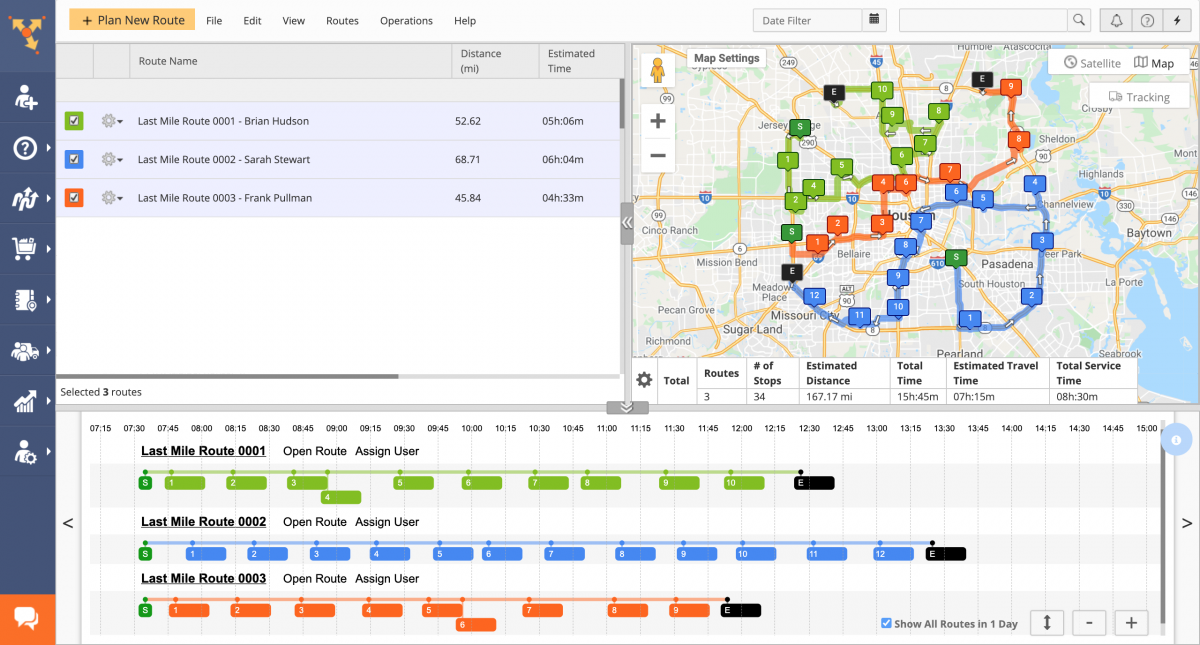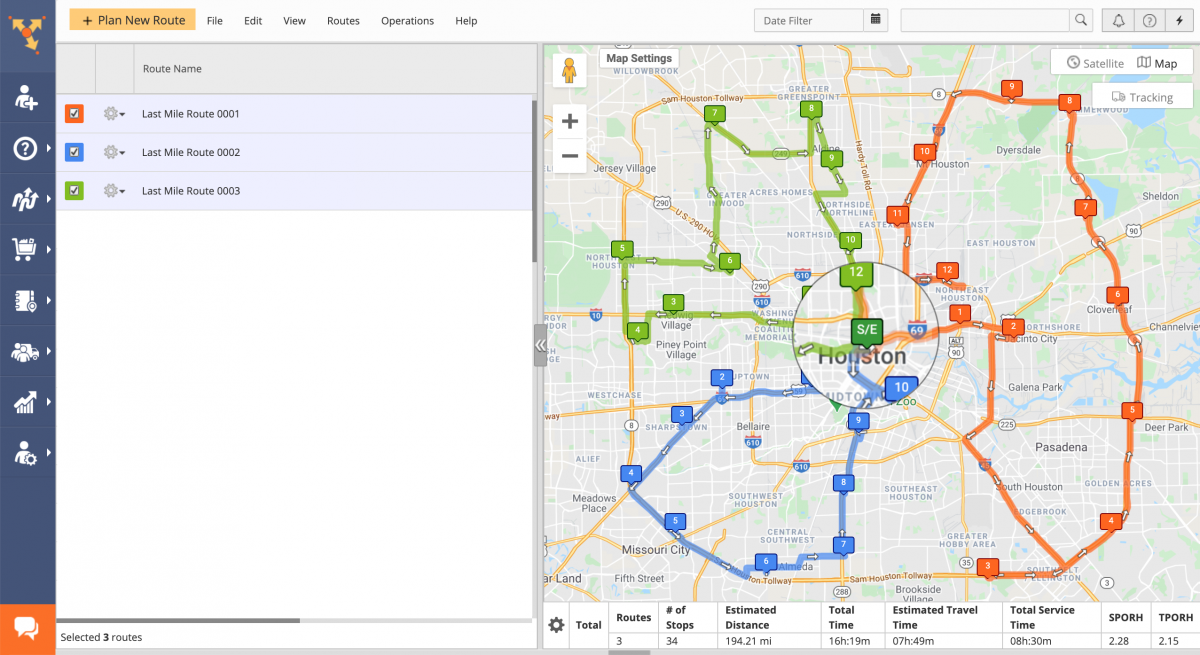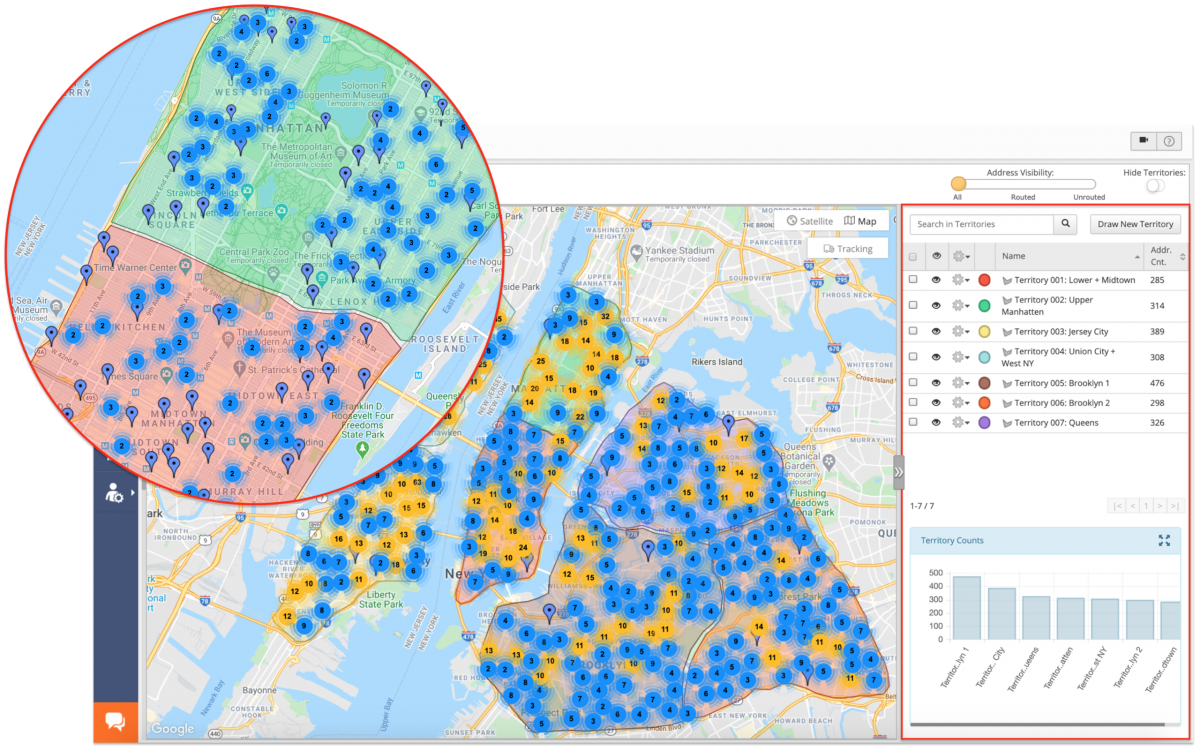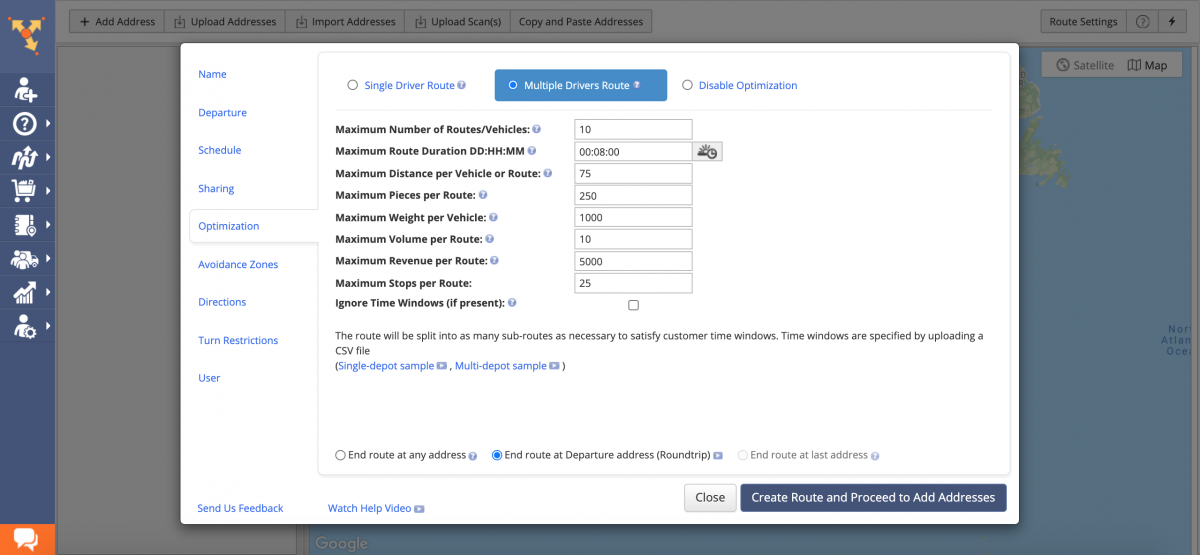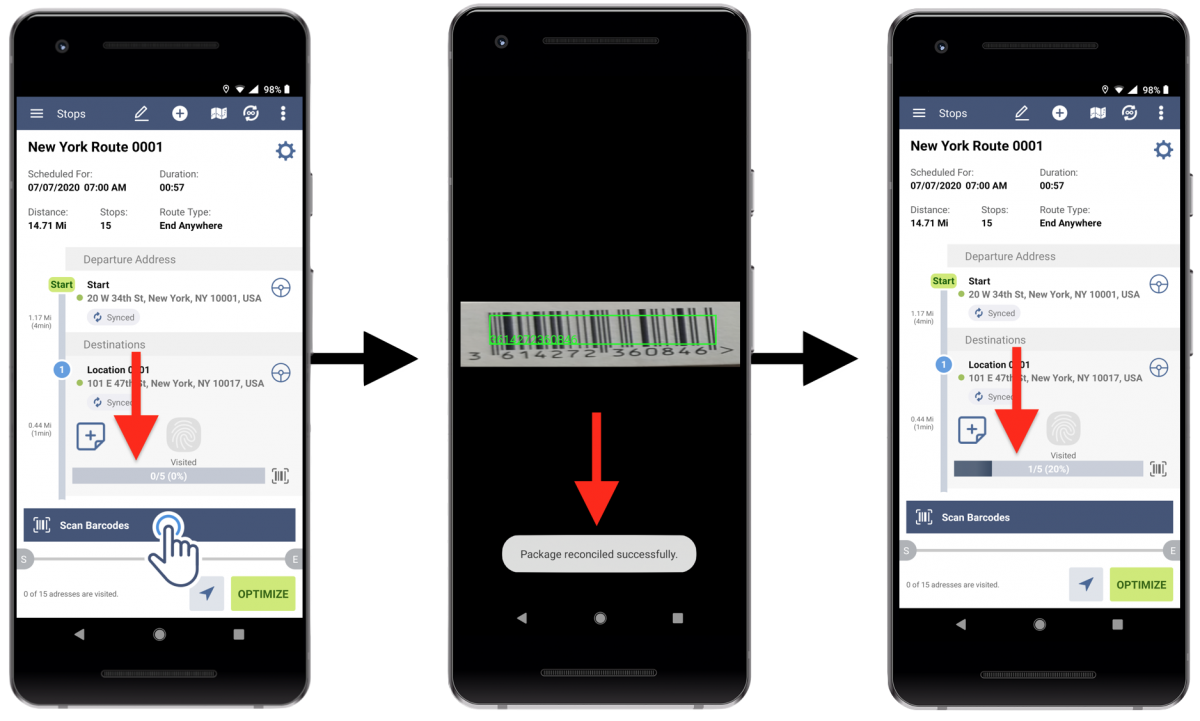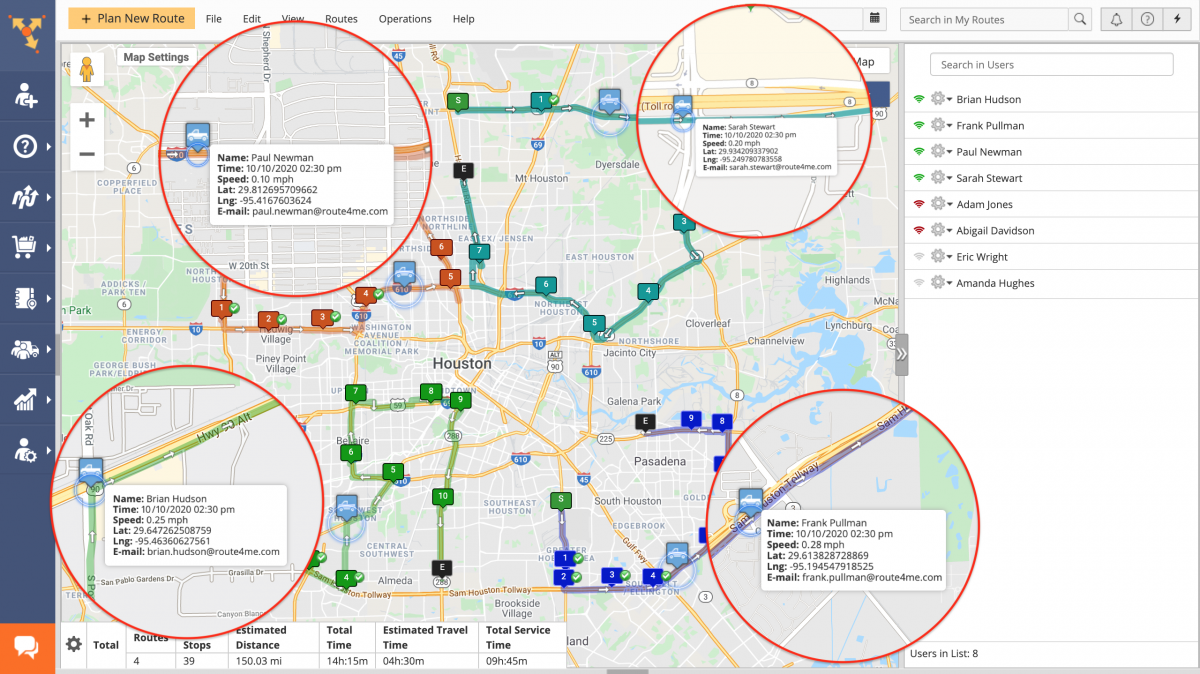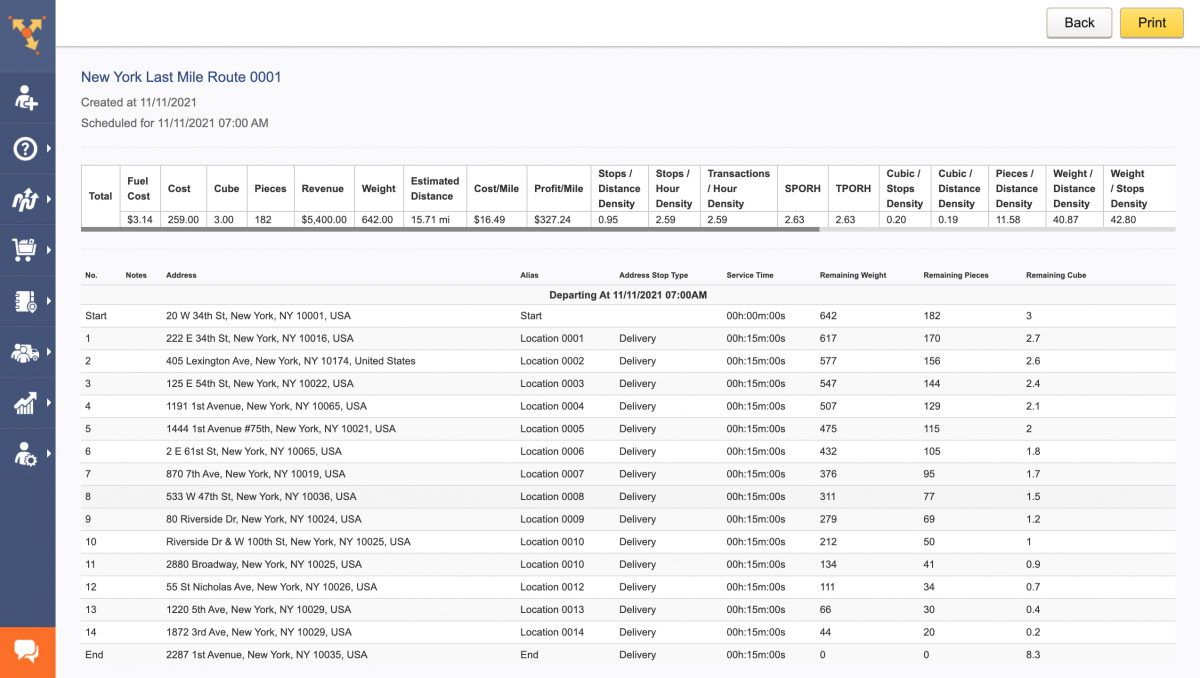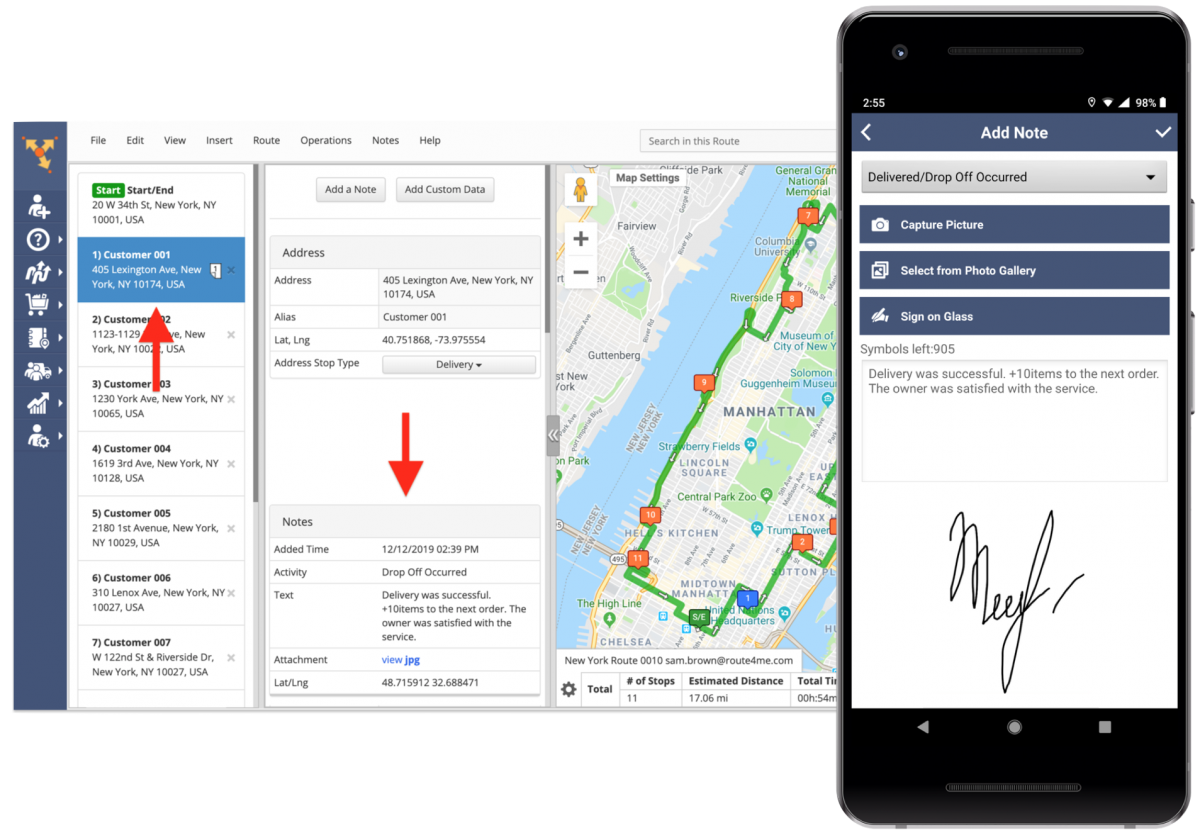DSD Routing – Direct Store Delivery Route Planning
Direct store delivery (DSD) takes warehousing and distribution centers out of the distribution of perishable and fragile goods, which makes it a more profitable alternative to centralized distribution. DSD helps suppliers and retailers reduce costs, improve sales, minimize waste, and more.
With many advantages, DSD has its challenges. When switching to a DSD operating model, suppliers need to ask themselves:
- What is the most cost-efficient sequence to visit and service all my retailers?
- How many routes should I create per vehicle per driver, taking into account my vehicles’ carrying and loading capacity?
- How do I deliver more products with fewer vehicles?
- How do I account for retailers’ availability time windows and minimize the wait time?
- How do I comply with my DSD state regulations?
Route4Me’s DSD Route Planning Software can answer all those questions for you – all in a couple of minutes.
Table of Contents
What is Direct Store Delivery? What is DSD?
Direct Store Delivery or DSD is a distribution model where a distributor or supplier delivers products directly to retail stores, avoiding the retailer’s distribution center. DSD is an alternative to the centralized distribution model where a supplier delivers products to the retailer’s distribution center first, then the retailer distributes the products to the stores, leading to a longer time to market.
The Benefits of Direct Store Delivery
Since it takes warehousing out of the distribution process, DSD is mainly used when transporting goods with a short shelf life, such as food and beverages. With DSD, retailers can keep perishable items on shelves for a longer time, minimizing waste and boosting sales.
DSD means fewer intermediaries and less product handling, which makes it ideal for transporting fragile items more safely.
Moreover, when opting for direct store delivery, retailers can reduce their payroll expenses since stocking and ordering will be the distributors’ responsibility.
Suppliers and distributors can also benefit from DSD by having the possibility to be more involved in the sales process and identify trends and patterns while closely monitoring customer behavior.
How to Optimize Direct Store Delivery?
To optimize your direct store delivery operations, you need to make sure that all retailers are visited in the most cost-efficient sequence and on time. With Multiple Drivers Route Optimization, you can import hundreds of thousands of store addresses, and Route4Me will automatically output the optimal number of best-sequenced routes for all available drivers.
Once planned and optimized, you can manually or automatically assign drivers and vehicles to your routes. Moreover, Route4Me will even tell you how many drivers and vehicles you really need to complete all deliveries, helping you to discover hidden and unnecessary expenses.
Single Depot DSD Routing: You can plan routes that start and end at the same depot or routes that start from the same depot and end at the optimal last store location.
Multiple Depots DSD Routing: Route4Me also allows you to plan multi depot routes, where each optimized route can start from a separate depot, or you can have groups of routes that start from different depots.
Depending on your business industry, you may have to visit hundreds of thousands of different stores, and you may also have to deliver specific products within different geographical territories. Route4Me’s territory-based route planning allows you to split large numbers of addresses into optimal geographical territories and plan optimized routes with different business rules within each store territory.
Route4Me’s Routing Business Rules will allow you to account for the number of available vehicles, vehicle capacity, and more. You can use the following constraints: Maximum Number of Routes/Vehicles, Maximum Route Duration, Maximum Distance per Vehicle or Route, Maximum Pieces, Weight, Volume, or Revenue per Route, and Maximum Stops per Route. In addition to that, you can also use Time Windows to account for customer availability windows.
How to Track SKUs (Stock-Keeping Units)?
One of the challenges of the Direct Store Delivery is that the manufacturer must keep track of hundreds of thousands of various SKUs, and this number increases almost every day. Route4Me’s delivery driver mobile apps allow you to add and reconcile multiple barcodes at all route addresses. The mobile barcode reconciliation feature will help you keep track of all delivery SKUs without additional software or expensive barcode scanners.
Compliance and Proof of Delivery
Different states have different regulations when it comes to consumer safety. Many demand distributors and suppliers to track their deliveries, provide proof of delivery (POD), keep expirable receipts, and so on. To help you comply with your local state regulations, Route4Me offers multiple solutions.
With Route4Me’s telematics features and flexible telematics integrations, you can keep track of all your drivers and shipments in near real-time. Moreover, all the data is securely stored in the cloud, and you can access your route GPS tracking data at any time.
Route4Me’s Route Manifest allows you to keep all your route data in a single, easily accessible place. Your route manifest can contain order parameters, ETAs, stop type, and other important information that may be requested based on your local regulations.
Route4Me supports various types of proof of delivery features (POD features) for your optimized DSD routes. You can use Route4Me’s iOS and Android mobile delivery driver apps for collecting customers’ e-signatures, photos, notes, and more.
Visit Route4Me's Marketplace to Check out Associated Modules:
- Operations
Custom Data Add-On
- Operations
Advanced Team Management Add-On
